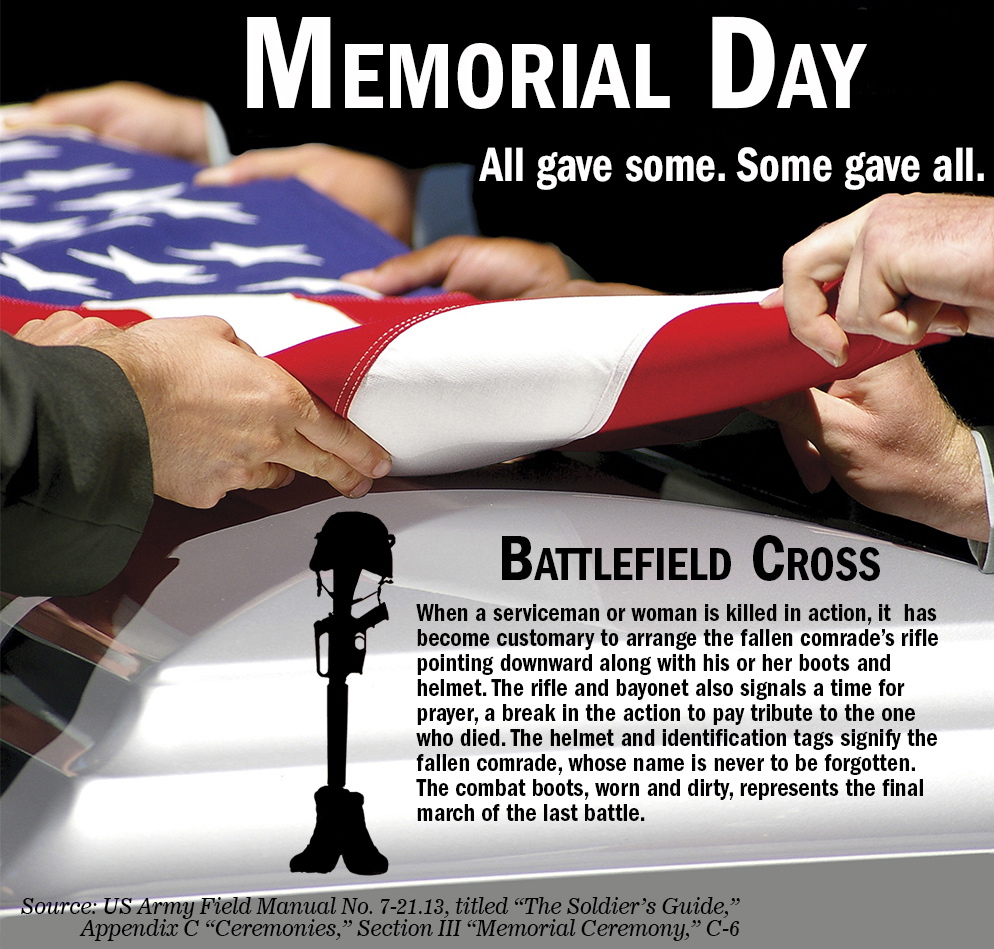Memorial Day, an American holiday observed on the last Monday of May, honors men and women who have died while serving in the U.S. military. First known as Decoration Day, it originated in the years following the Civil War and became an official federal holiday in 1971.
The Civil War claimed more American lives than any conflict in U.S. history — more than 600,000. By the late 1860s, springtime tributes were being held in many locations, both North and South, for these fallen soldiers, with people decorating their graves with flowers and reciting prayers.
One of the first tributes occurred in Columbus, Miss., on April 25, 1866, when a group of women visited a cemetery to decorate the graves of Confederate soldiers who had fallen in battle at Shiloh, according to the U.S. Department of Veterans Affairs. Nearby were barren graves of Union soldiers, neglected because they were the enemy. Disturbed at the sight of the bare graves, the women placed some of their flowers on those graves, as well.
Decoration Day
On May 5, 1868, Maj. Gen. John A. Logan, leader of an organization for Northern Civil War veterans, called for a nationwide day of remembrance, according to www.usmemorialday.org, a website dedicated to Memorial Day: “The 30th of May, 1868, is designated for the purpose of strewing with flowers, or otherwise decorating the graves of comrades who died in defense of their country during the late rebellion, and whose bodies now lie in almost every city, village and hamlet churchyard in the land.”
The date of Decoration Day, as he called it, was chosen because it wasn’t the anniversary of any particular battle and because flowers likely would be in bloom all over the country.
Logan’s order to decorate graves “with the choicest flowers of springtime,” according to the VA website, urged: “We should guard their graves with sacred vigilance. … Let no wanton foot tread rudely on such hallowed grounds. Let pleasant paths invite the coming and going of reverent visitors and fond mourners. Let no neglect, no ravages of time, testify to the present or to the coming generations that we have forgotten as a people the cost of a free and undivided republic.”
evolution of observance
Although Decoration Day originally honored only those who died while fighting in the Civil War, the holiday has evolved to commemorate the 1.8 million American military personnel who have died in all wars since 1775, according to the Memorial Day website.
The preferred name for the holiday gradually changed from “Decoration Day” to “Memorial Day,” which was first used in 1882, although it did not become the more common name until after World War II. By the end of the 19th century, state legislatures throughout the country designated May 30 as Memorial Day and authorizing ceremonies to be held in honor of the nation’s war dead, according to the VA.
For 100 years, Memorial Day was observed on May 30, the date chosen for that first Decoration Day, according to The History Channel website. In 1968, however, Congress passed the Uniform Monday Holiday Act, which established Memorial Day as the last Monday in May; the change went into effect in 1971. The same law also declared Memorial Day a federal holiday.
moment of remembrance
To ensure the sacrifices of America’s fallen heroes are never forgotten, the U.S. Congress passed in 2000 and President Bill Clinton signed into law “The National Moment of Remembrance Act,” which encourages all Americans to pause wherever they are at 3 p.m. local time on Memorial Day for a minute of silence to remember and honor those who have died in service to the nation.
“It’s a way we can all help put the memorial back in Memorial Day,” said Carmella LaSpada, Moment of Remembrance founder, according to the VA website.
flag protocol
On Memorial Day, according to the United States Code, 2006, Supplement 1, the flag should be flown at half-staff from sunrise until noon only, then raised briskly to the top of the staff until sunset, in honor of the nation’s battle heroes. The Memorial Day website explains the significance of the flag protocol: The half-staff position remembers the 1.8 million men and women who gave their lives in service of their country. At noon, their memory is raised by the living, who resolve to let their sacrifice not be in vain, but to rise up in their stead and continue the fight for liberty and justice for all.
Stephanie Law is a copy editor for the Kennebec Journal and Morning Sentinel.
Send questions/comments to the editors.



Comments are no longer available on this story